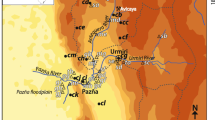
Overview
- State of art in risk management of water supply and sanitation systems
- Multidisciplinary approach to problem of risk management
- Technical, ecological and socio-economical point of view
Part of the book series: NATO Science for Peace and Security Series C: Environmental Security (NAPSC)
Access this book
Tax calculation will be finalised at checkout
Other ways to access
About this book
Each year more than 200 million people are affected by floods, tropical storms, droughts, earthquakes, and also operational failures, wars, terrorism, vandalism, and accidents involving hazardous materials. These are part of the wide variety of events that cause death, injury, and significant economic losses for the countries affected.
In an environment where natural hazards are present, local actions are decisive in all stages of risk management: in the work of prevention and mitigation, in rehabilitation and reconstruction, and above all in emergency response and the provision of basic services to the affected population. Commitment to systematic vulnerability reduction is crucial to ensure the resilience of communities and populations to the impact of natural and manmade hazards.
Current challenges for the water and sanitation sector require an increase in sustainable access to water and sanitation services in residential areas, where natural hazards pose the greatest risk. In settlements located on unstable and risk-prone land there is growing environmental degradation coupled with extreme conditions of poverty that increase vulnerability. The development of local capacity and risk management play vital roles in obtaining sustainability of water and sanitation systems as well as for the communities themselves.
Unfortunately water may also represent a potential target for terrorist activity or war conflict and a deliberate contamination of water is a potential public health threat. An approach which considers the needs of communities and institutions is particularly important in urban areas affected by armed conflict. Risk management for large rehabilitation projects has to deal with major changes caused by conflict: damaged or destroyed infrastructure, increased population, corrupt or inefficient water utilities, and impoverished communities.
Water supply and sanitation are amongst the first considerations in disaster response. The greatest water-borne risk to health in most emergencies is the transmission of faecal pathogens, due to inadequate sanitation, hygiene and protection of water sources. However, some disasters, including those involving damage to chemical and nuclear industrial installations, or involving volcanic activity, may create acute problems from chemical or radiological water pollution. Sanitation includes safe excreta disposal, drainage of wastewater and rainwater, solid waste disposal and vector control.
This book is based on the discussions and papers prepared for the NATO Advanced Research Workshop that took place in Ohrid, Macedonia under the auspices of the NATO Security Through Science Programme and addressed problems Risk management of water supply and sanitation systems impaired by operational failures, natural disasters and war conflicts.
The main purpose of the workshop was to critically assess the existing knowledge on Risk management of water supply and sanitation systems, with respect to diverse conditions in participating countries, and promote close co-operation among scientists with different professional experience from different countries.
The ARW technical program comprised papers on 4 topics, : (a) Vulnerability of Wastewater and Sanitation Systems, (b) Vulnerability of Drinking Water Systems, (c) Emergency response plans, and (d) Case studies from regions affected by Drinking Water System, Wastewater and Sanitation System failures.
Similar content being viewed by others
Keywords
Table of contents (30 papers)
-
Front Matter
-
Vulnerability of Wastewater and Sanitations Systems
-
Vulnerability of Drinking Water Systems
-
Emergency Response Plans
Editors and Affiliations
Bibliographic Information
Book Title: Risk Management of Water Supply and Sanitation Systems
Editors: Petr Hlavinek, Cvetanka Popovska, Jiri Marsalek, Ivana Mahrikova, Tamara Kukharchyk
Series Title: NATO Science for Peace and Security Series C: Environmental Security
DOI: https://doi.org/10.1007/978-90-481-2365-0
Publisher: Springer Dordrecht
eBook Packages: Earth and Environmental Science, Earth and Environmental Science (R0)
Copyright Information: Springer Science+Business Media B.V. 2009
Hardcover ISBN: 978-90-481-2363-6Published: 11 May 2009
Softcover ISBN: 978-90-481-2364-3Published: 11 May 2009
eBook ISBN: 978-90-481-2365-0Published: 28 April 2009
Series ISSN: 1874-6519
Series E-ISSN: 1874-6543
Edition Number: 1
Number of Pages: XVI, 325
Topics: Waste Water Technology / Water Pollution Control / Water Management / Aquatic Pollution, Water Industry/Water Technologies, Civil Engineering, Monitoring/Environmental Analysis, Ecotoxicology



